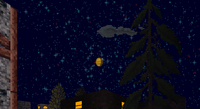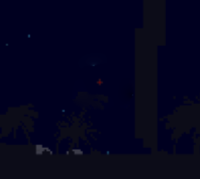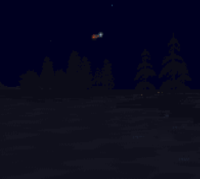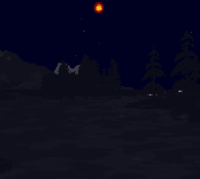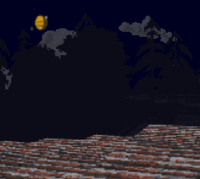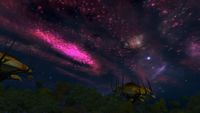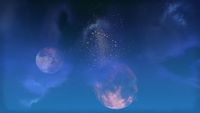Lore:Stars
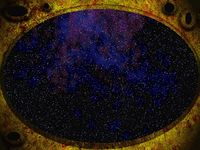
Stars are astronomical objects believed by many to be tears in the veil of Oblivion that lead to Aetherius. There are a great many stars in the sky, some of which form the Constellations.
Altmer myths claim that stars were created by the Magna Ge, Anuic spirits that fled Creation after the departure of its architect, the god Magnus,[1] who made the world.[2][3][4] Magnus himself left the greatest tear in the firmament: the Sun, sometimes named Magnus.[5][6][7] The stars are therefore sometimes referred to as the "children of Magnus".[8] According to one Aldmeri myth and the creation tale of the Anuad, the stars were instead created from the blood of Anu. Some believe that stars are "fragments" of Magnus.[4][9]
Within Bosmer belief Y'ffre is believed to have created day, night, and the places between through the manner in which he interpreted the laws of time established by Anui-El and applied them to Nirn, he is also believed to be responsible for the movements of the stars, as to this day the realms they're windows to sway and wink to his song.[3] Dunmer faith also acknowledges Y'ffre in this capacity of being the deity responsible for the movements of the stars, which still sway to the beautiful song he sang when he walked Nirn before the first day.[10]
Some stars are named after or associated with Daedric Princes or the Daedra in general.[11][12] According to N'Gasta, the Daedra were born before the stars.[13]
Redguards believe that the stars were created by Ruptga, who was so big he could place the stars themselves in the sky, as a way to guide spirits to the far shores. Their myths also describe how, after his death, the hunger of Sep, the Second Serpent, took form in the sky as a hungry void that chases and tries to devour the stars.[5][14] Some sources claim that, before deceiving the spirits, Sep stole one of the stars which Ruptga held in his hand and was using to form the Great Map and put it in his pocket. When Sep was killed, it is this star that fell out of his mouth in the form of a pearl. The peal fell to the land and was covered by sand, and so came to belong to Zeht. It is said that this Pearl is the "Way and the Guide", the "light to the Far Shores and back again" and, when it is at last discovered again, water will flow over all the previous Worldskins and the time of Sep's Hunger will be over, the Hungry Stomach of Satakal at last sated. It is also said that the Hunger is what answers the call of the worlds to save them, and that the only real world is that of Satakal, as the stars can't be devoured.[15]
The ancient Nedes believed the stars were set in their courses by the Great Dragon of Time, who also appointed the guardians to watch over them.[16]
The Celestials are powerful ethereal beings formed by the power of the stars, the most powerful of which represent the Constellations. It is unknown if these beings are from Aetherius or if they are mortals who have achieved a state of ascension.[17] Whatever the case, the Celestials that represent the constellations are linked to them, as in 2E 582 the corresponding stars temporarily vanished from the sky while the Celestials took form in Craglorn, and are said to be part of the world's natural order.[18][19]
Known Stars[edit]
|
History[edit]
The ancient Nedic people of Craglorn followed a religion known as the Cult of the Stars.[21]
The ships built for Yngol and Ylgar are named after two favored stars in the Atmoran sky; the Darumzu, and the Harakk.[22]
In the area of the Iliac Bay the three stars of Locanda glowing in the night stand for unholy alliances.[23]
Some Reachfolk witches can read the stars and see the future and hidden truths in their light.[24] Similar practices could be observed among the inhabitants of the Iliac Bay.[25]
According to her faithful, Vaermina "lights the sky of our world" and "is the stars of our world". They believed that "her thousand truths are a thousand lights in the night sky".[26]
In 2E 578 or 2E 579, the Soulburst occurred, as a result, the constellation of the Serpent became so large in the night sky it seemed to threaten every other star sign at once. In 2E 582, the year of the Planemeld which the Soulburst set in motion, the Serpent Celestial enacted his own scheme to ensnare the other constellation celestials and remake the mortal world in his image, but was stopped by The Vestige.[UOL 1][27][18][19]
Gallery[edit]
-
Large star or stars[nb]
(Arena) -
Large star[nb]
(Arena) -
Large star and possibly satellite stars[nb]
(Arena) -
Stars and constellations in the Shivering Isles on a clear night
(Shivering Isles) -
Sky of the Spilled Sand
(ESO)
Notes[edit]
See Also[edit]
References[edit]
- ^ Exegesis of Merid-Nunda — Phrastus of Elinhir
- ^ Wayshrines of Tamriel — Beredalmo the Signifier
- ^ a b Girnalin's dialogue in ESO
- ^ a b The Infernal City — Greg Keyes
- ^ a b Varieties of Faith in the Empire — Brother Mikhael Karkuxor of the Imperial College
- ^ Before the Ages of Man — Aicantar of Shimerene
- ^ 36 Lessons of Vivec, Sermon 33 — Vivec
- ^ Magnus Stone in Oblivion
- ^ The Annotated Anuad
- ^ Of Jephre — Anonymous
- ^ Background Information in Daggerfall
- ^ The Anticipations — Anonymous
- ^ N'Gasta's dialogue in Redguard
- ^ The Monomyth
- ^ Hayyazin's Dialogue in ESO
- ^ Tales of Abba Arl: The Ox's Tale — Abba Arl
- ^ Mederic Vyger's dialogue in ESO
- ^ a b The Thief's dialogue in ESO
- ^ a b Hara's dialogue in ESO
- ^ a b Calcinator Treatise
- ^ Erold's dialogue in ESO
- ^ Songs of the Return, Vol 2
- ^ The Vampire Relic in Daggerfall
- ^ Arana's dialogue during Blood of the Reach in ESO: Markarth
- ^ Oracle in Daggerfall
- ^ In Dreams We Awaken
- ^ The Prophet's dialogue in ESO
Note: The following references are considered to be unofficial sources. They are included to round off this article and may not be authoritative or conclusive.
